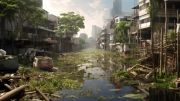Windup Girl

by Paolo Bacigalupi
Introduction:
"Windup Girl" by Paolo Bacigalupi, published in 2009, is a dystopian biopunk novel that presents a bleak vision of the future where humanity's reliance on genetic engineering and bioengineered organisms has led to environmental devastation and social unrest. In this summary, we will delve into the immersive world Bacigalupi has created and examine the intricate plot and compelling characters that drive the narrative.
Part I: A Fragmented Society
Bangkok's Bleak Setting:
The story takes place in a future Bangkok, Thailand, where rising sea levels and environmental catastrophes have left the city vulnerable and isolated. Corporations, such as AgriGen, control the food supply by using genetically modified organisms (GMOs) and exerting their influence over society. The city is divided into segregated districts, and tensions between various factions simmer beneath the surface.
The Windup Girl:
Emiko, a "windup" or genetically engineered human, is one of the central characters. She is created to serve as a companion and pleasure device, but she is treated as a subhuman by society. Emiko's struggles and quest for freedom provide a glimpse into the moral implications of bioengineering and the treatment of artificial beings in a society driven by profit and power.
Part II: Interwoven Stories
Anderson Lake's Quest:
Anderson Lake, an employee of AgriGen, disguises himself as a factory owner in Bangkok while secretly searching for the seedbank of a rare and valuable fruit. He becomes entangled in the city's politics, corporate espionage, and the discovery of hidden secrets that challenge his loyalty to AgriGen and his own humanity.
Political Intrigue and Rebellion:
Political tension escalates as the Trade Ministry, led by Jaidee Rojjanasukchai, seeks to protect Thailand's interests and resist foreign influence. Jaidee's unwavering commitment to his ideals puts him on a collision course with Anderson Lake and the corporate powers that control the city. As the novel progresses, the narrative explores themes of power, corruption, and resistance against oppressive systems.
Part III: Themes and Ethical Dilemmas
Environmental Consequences and Genetic Engineering:
Bacigalupi raises thought-provoking questions about the consequences of uncontrolled genetic engineering and the environmental impact of manipulating natural ecosystems. The use of GMOs has led to destructive consequences and the emergence of new diseases, blurring the boundaries between nature and human manipulation.
Exploration of Identity and Exploitation:
The novel explores the concept of identity through the character of Emiko, who grapples with her status as a genetically engineered being and her desire for autonomy and acceptance. Her journey raises profound questions about the nature of humanity, exploitation, and the rights of artificial life forms.
Part IV: Converging Threads and Climax
Convergence of Storylines:
As the various threads of the narrative intertwine, the characters' lives become increasingly interconnected. The choices they make and the alliances they form determine the fate of the city and its inhabitants. The tensions between Anderson Lake, Jaidee Rojjanasukchai, and Emiko reach a boiling point, setting the stage for a climactic confrontation.
The Climactic Battle:
The novel builds towards a climactic battle where loyalties are tested, and the true nature of power and resistance is revealed. The outcome of this struggle will shape the future of Bangkok and determine the destiny of its people.
Conclusion:
"Windup Girl" by Paolo Bacigalupi is a gripping and thought-provoking dystopian biopunk novel that delves into the consequences of genetic engineering, corporate control, and environmental degradation. Through its complex characters and exploration of ethical dilemmas, the novel challenges readers to reflect on the future of technology, humanity, and the delicate balance between progress and its consequences.
Back to the Cyberpunk Books page.